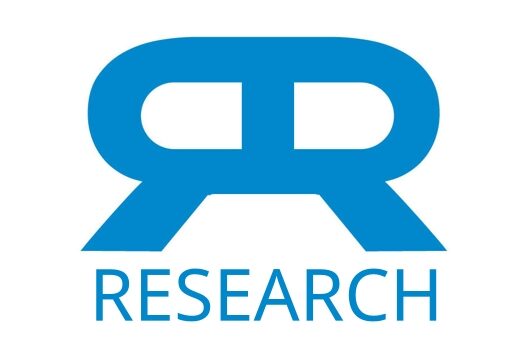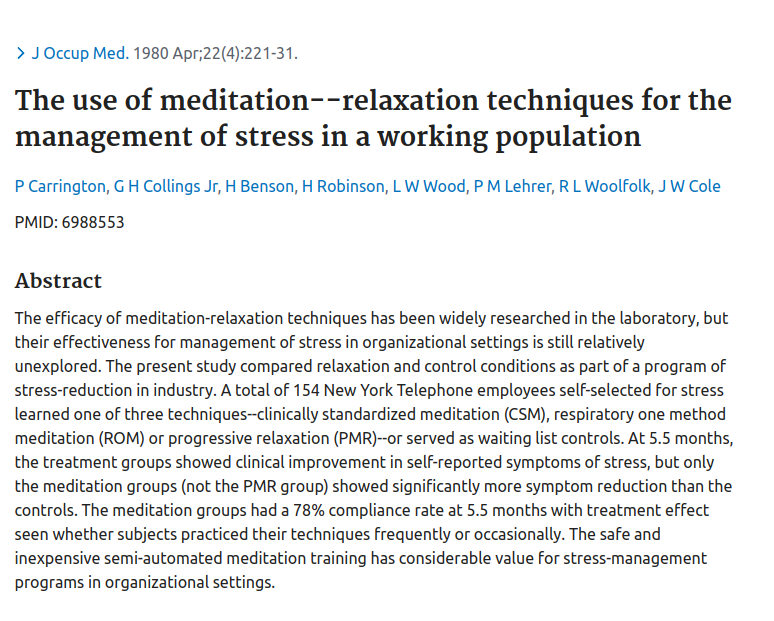The efficacy of meditation-relaxation techniques has been widely researched in the laboratory, but their effectiveness for management of stress in organizational settings is still relatively unexplored. The present study compared relaxation and control conditions as part of a program of stress-reduction in industry. A total of 154 New York Telephone employees self-selected for stress learned one of three techniques–clinically standardized meditation (CSM), respiratory one method meditation (ROM) or progressive relaxation (PMR)–or served as waiting list controls. At 5.5 months, the treatment groups showed clinical improvement in self-reported symptoms of stress, but only the meditation groups (not the PMR group) showed significantly more symptom reduction than the controls. The meditation groups had a 78% compliance rate at 5.5 months with treatment effect seen whether subjects practiced their techniques frequently or occasionally. The safe and inexpensive semi-automated meditation training has considerable value for stress-management programs in organizational settings.
The use of meditation--relaxation techniques for the management of stress in a working population
Publication
J Occup Med
22(4):221-31
Abstract
Web and Email Links
Related Listings
Journal
Behavioral Medicine
The authors assessed data from 1,148 outpatients in a 10-week medical symptom reduction program to determine the effectiveness of a behavioral medicine intervention among somatizing patients. The program included instruction in the relaxation response, cognitive restructuring, nutrition, and exercise. Before and after the intervention, the patients were evaluated on the Symptom Checklist-90 Revised (SCL-90R), the Medical Symptom Checklist, and the Stress Perception Scale. They were di […]
Journal
International Journal of Cardiology
We report extremely prominent heart rate oscillations associated with slow breathing during specific traditional forms of Chinese Chi and Kundalini Yoga meditation techniques in healthy young adults. We applied both spectral analysis and a novel analytic technique based on the Hilbert transform to quantify these heart rate dynamics. The amplitude of these oscillations during meditation was significantly greater than in the pre-meditation control state and also in three non-meditation […]
Journal
Psychiatry
In the Western world today, there is a growing interest in nonpharmacological, self-induced, altered states of consciousness because of their alleged benefits of better mental and physical health and improved ability to deal with tension and stress. During the experience of one of these states, individuals claim to have feelings of increased creativity, of infinity, and of immortality; they have an evangelistic sense of mission, and report that mental physical suffering vanish (Dean). […]

